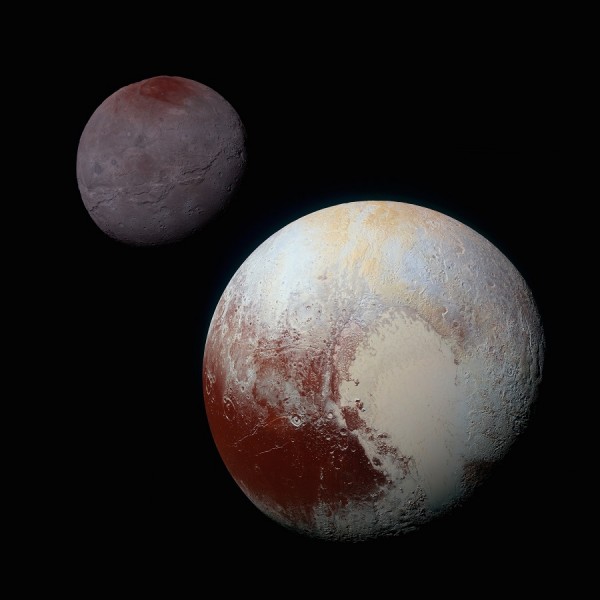By Ana Verayo, | December 02, 2016

Pluto’s ice-covered “heart” is clearly visible in this false-color image from NASA’s New Horizons spacecraft. (NASA/JHUAPL/SwRI)
Scientists have revealed that Pluto's famous "heart" is apparently sinking. In a new study, mission scientists suggest another explanation for how this heavy, heart shaped basin formed on the surface of the dwarf planet.
A team from the University of Maryland suggest that this basin feature known as Sputnik Planitia was formed due to the massive crushing weight of ice on the surface of Pluto, as opposed to the theory that it as caused by an asteroid impact that pummeled into the dwarf planet millions of years ago.
Like Us on Facebook
According to astronomer Douglas Hamilton of the University of Maryland, new computer models show that Pluto's ice is similar to the Greenland ice sheet on Earth. As the ice pushed down Pluto's surface, the crust beneath it formed a basin.
This new study suggests that Pluto's ice cap formed when the icy dwarf planet was still in its early stages of formation, as Pluto was still spinning fast, forming this basin. Apart from this, this ice cap is also asymmetrical in the direction of Charon, Pluto's largest moon which is locked to its gravity depending on the orbital spin of Pluto.
Researchers theorize that Pluto's climate along with its spin axis, which is tilted by 120 degrees, resulted in this rather unusual location of this ice cap. In contrast, Earth's axial tilt is at 23.5 degrees.
Data revealed that every 248 years, Pluto's climate changes, making its north and southern latitudes the coldest regions on the dwarf planet. This also means that this is significantly colder that the north and south poles. Ultimately, ice formed around these latitudes and the center of Sputnik Planitia, or Pluto's "heart."
When this ice deposit accumulated over time, more solar heat and light reflected off the ice, keeping temperatures relatively low. Since this basin is now bigger than the current ice volume within it today, scientists suggest that Pluto's heart is sinking, gradually losing mass over time.
Apart from Pluto, the other planets in the solar system that also have polar ice caps are Earth and Mars.
This new study was published in the journal, Nature.
-
Use of Coronavirus Pandemic Drones Raises Privacy Concerns: Drones Spread Fear, Local Officials Say

-
Coronavirus Hampers The Delivery Of Lockheed Martin F-35 Stealth Fighters For 2020

-
Instagram Speeds Up Plans to Add Account Memorialization Feature Due to COVID-19 Deaths

-
NASA: Perseverance Plans to Bring 'Mars Rock' to Earth in 2031

-
600 Dead And 3,000 In The Hospital as Iranians Believed Drinking High-Concentrations of Alcohol Can Cure The Coronavirus

-
600 Dead And 3,000 In The Hospital as Iranians Believed Drinking High-Concentrations of Alcohol Can Cure The Coronavirus

-
COVID-19: Doctors, Nurses Use Virtual Reality to Learn New Skills in Treating Coronavirus Patients







